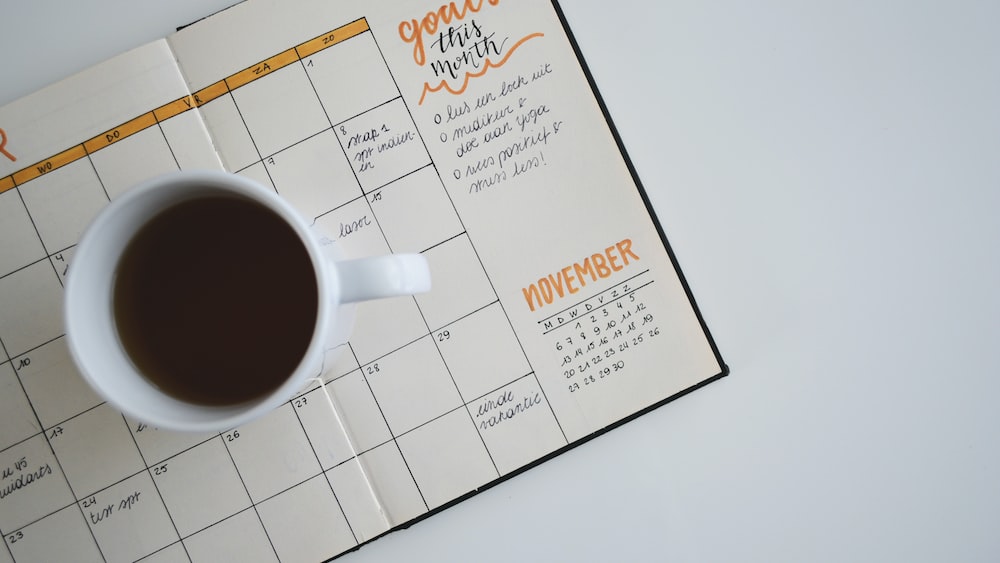9 Winning Strategies For Goal Setting In The Classroom
Are you ready to revolutionize your classroom and maximize student success? Embracing goal setting is the key! By employing these nine effective strategies, you can transform even monotonous classroom activities into exciting stepping stones toward achievement.
In this blog post, we’ll explore how goal setting enhances motivation, improves academic performance, and fosters essential life skills.
Say goodbye to dull routines and dive headfirst into a world where learning objectives meet metacognitive growth.
Key Takeaways
- Goal setting in the classroom can enhance motivation, improve academic performance, and develop important life skills.
- Using SMART goals (Specific, Measurable, Achievable, Relevant, and Time – bound) is an effective strategy for successful goal setting in the classroom.
- Involving students in the goal-setting process through self-reflection fosters growth mindset development among children and helps them become better learners.
- Breaking down larger goals into smaller manageable steps can help students feel less overwhelmed and more motivated to work towards achieving their academic goals. Providing ongoing feedback throughout the goal-setting process also promotes engagement.
Why Goal Setting Is Important In The Classroom
In the classroom, goal setting is essential because it enhances motivation and engagement, improves academic performance, and develops life skills.
Goal setting enhances student motivation and engagement, leading to academic success and greater purpose in their learning process.
Enhances Motivation And Engagement
Goal setting in the classroom is a powerful tool that not only helps students achieve academic success but also enhances their motivation and engagement. When you involve your students in setting clear, measurable goals for themselves, they become more invested in their learning process and are more likely to take ownership of their progress.
With specific objectives to work towards, students often find greater purpose in their day-to-day activities within the classroom. For example, a student who has set a goal to improve his or her writing skills might pay closer attention during language arts lessons and eagerly seek out opportunities for additional practice outside of class.
Improves Academic Performance
When we set goals, our minds shift from abstract thoughts to specific actions. For example, a student who sets a goal of improving their grades in math will be more likely to focus on completing homework assignments and asking for extra help during class.
This increased focus and motivation can lead to improved academic performance.
Effective instruction strategies that utilize goal-setting can also incorporate formative assessments into classroom routines, allowing teachers to pivot instruction based on student performance data.

Develops Life Skills
When we teach our students to set and achieve goals, we’re not just helping them academically – we’re also encouraging the development of important life skills. By setting goals, students learn valuable metacognitive strategies that can be applied in any area of their lives.
For example, when a student sets a goal for improving their math grade, they learn how to break a large task into smaller steps and prioritize those steps based on importance.
Goal-setting also fosters increased self-discipline and self-control among students. By learning how to set achievable objectives and work steadily towards them over time, they develop habits of persistence and tenacity that will serve them well as they navigate life’s challenges.
Moreover, effective goal setting promotes growth mindset development amongst learners which enables them develop good problem solving skills that prepare students for challenges ahead by equipping themselves with resilience rather than discourage at failures along the way.
Effective Strategies For Goal Setting In The Classroom
To ensure successful goal setting in the classroom, we recommend using SMART goals that are specific, measurable, attainable, relevant and time-bound. It is also important to involve students in the goal-setting process by encouraging them to articulate their own goals and objectives.
Breaking down these goals into manageable steps and providing feedback and support can help students stay on track towards achieving their desired outcomes.
Use SMART Goals
When it comes to goal setting in the classroom, using SMART goals is a highly effective strategy. SMART stands for Specific, Measurable, Achievable, Relevant, and Time-bound. By incorporating these elements into student goal-setting, teachers can help their students achieve success. Here are some ways to use SMART goals in your classroom:
- Be specific: Help students clearly define what they want to achieve by setting clear objectives. For example, instead of “improving my grades”, have them set a more specific goal such as “improving my math grade by 10%”.
- Make it measurable: Ensure that each goal has a measurable outcome so progress can be tracked and evaluated. Students should know exactly how they will measure their progress towards achieving the set goals.
- Keep it achievable: Goals should be challenging but realistic for students. Stretching beyond current abilities is good; however aim too high and you risk disengaging or demotivating students once they realize their goals are unachievable.
- Make sure it’s relevant: Goals should be aligned with learning objectives and instructional content or learning standards to make them relevant for learners. Learning about a random fact might sound interesting but may not be applicable to the overarching objectives of the course or curriculum.
- Give it a deadline: Make sure there is a clear timeframe outlined within which students must achieve their goals. This helps with focus and ensures accountability.
Using SMART goals allows for greater clarity in direction as well as improvement in metacognitive skills such as self-reflection and awareness of one’s own learning needs.
Involve Students In The Goal Setting Process
One effective strategy for successful goal setting in the classroom is involving students in the process. When students have a say in what they want to achieve and how they will go about it, they are more likely to be motivated and engaged.
One way of involving students is by allowing them to set their own goals, either individually or as a group. Teachers can then work with them to make sure these goals are SMART (specific, measurable, achievable, relevant, and time-bound).
Another way of involving students in the goal-setting process is through self-reflection. By encouraging regular opportunities for self-reflection, teachers can give feedback on progress made against established goals and identify areas where additional effort might be needed.
Break Goals Into Manageable Steps
If you want to achieve your goals, one of the most effective strategies is to break them down into manageable steps. This approach can also be applied in the classroom to help students achieve their academic goals. Here are some tips for breaking goals into manageable steps:
- Identify the goal: The first step is to identify the goal that needs to be achieved. This could be an academic goal, such as improving a particular skill or achieving a certain grade.
- Determine sub-goals: Once you have identified the main goal, break it down into smaller, more specific sub-goals that need to be achieved along the way.
- Set deadlines: It is important to set realistic deadlines for each sub-goal. This will help students stay on track and ensure that progress is being made towards the main goal.
- Create a plan of action: For each sub-goal, create a plan of action that outlines what needs to be done in order to achieve it.
- Use visual aids: Visual aids such as charts or graphs can be helpful for tracking progress and keeping students motivated.
- Monitor progress: Regularly monitoring progress towards each sub-goal can help students stay motivated and identify areas where they may need additional support.
- Adjust as needed: If students are struggling with a particular sub-goal, it may be necessary to adjust the plan of action or set new deadlines in order to keep them on track.
- Celebrate success: When a student achieves a sub-goal, celebrate their success! This can help boost motivation and encourage them to continue working towards their ultimate goal.
- Reflect and adjust: After each sub-goal has been achieved, take time to reflect on what worked well and what could be improved upon for future goals. Use this information to adjust plans and strategies as needed moving forward.
By breaking down larger goals into smaller, more manageable steps, students can feel less overwhelmed and more motivated to work towards achieving their academic goals. With the right tools and strategies in place, goal setting can become a powerful tool for promoting student success in the classroom.
Providing ongoing feedback throughout the goal-setting process helps promote engagement and progress while building life skills such as self-reflection and perseverance that will serve your students well beyond the classroom walls.
Provide Feedback And Support
When setting goals in the classroom, it’s important to provide students with feedback and support along the way. This helps them track their progress, make adjustments if needed, and stay motivated towards achieving their goal.
As a teacher, you can provide feedback through regular check-ins with students or by giving specific praise for completed milestones.
One helpful strategy is conducting formative assessments to evaluate where each student stands in regards to their learning objectives. You can then use this information to offer targeted feedback and support based on individual needs.

Overall, providing ongoing feedback throughout the goal-setting process helps promote engagement and progress while building life skills such as self-reflection and perseverance that will serve your students well beyond the classroom walls.
Foster A Growth Mindset
Fostering a growth mindset is crucial when it comes to goal setting in the classroom. By instilling this mentality in students, they understand that their abilities can be developed through hard work and dedication.
To promote a growth mindset, start by acknowledging effort over natural ability. Praise students for their perseverance, resilience, and willingness to take risks instead of solely focusing on grades or talent.
Encourage them to ask questions, seek help when needed, and reflect on their progress regularly.
Another way is by using positive affirmations such as “I may not have the answer yet but I’m working on it” or “Mistakes are proof that I am trying”.
These statements help shift the focus from outcomes to the process itself which fosters self-awareness and empowers students’ problem-solving abilities.
Supporting Student Goal-Setting
To support student goal-setting, we can overcome common challenges by providing guidance and resources for formulating achievable goals, celebrate achievements through feedback and recognition, encourage reflection and self-evaluation to track progress, and integrate goal setting into daily routines to develop metacognitive skills.
Overcoming Common Challenges
We all face challenges when it comes to setting and achieving our goals. In the classroom, there are a few common obstacles that students may encounter. Here are some strategies to help overcome those challenges:
- Lack of clarity: Students may struggle to set clear and specific goals. Encourage them to ask questions and seek guidance from teachers or peers.
- Fear of failure: Many students are afraid of setting high goals because they fear they won’t achieve them. Help them overcome this fear by emphasizing the importance of growth mindset and progress over perfection.
- Limited resources: Students in low-income areas or with limited access to technology may struggle to attain certain goals due to lack of resources. Teachers can work with their school or community to provide additional resources as needed.
- Procrastination: Students may have trouble getting started on their goals due to procrastination. Suggest breaking down larger goals into manageable steps, setting deadlines, and scheduling regular check-ins for accountability.
- Distractions: With so many distractions in today’s world, students may struggle with staying focused on their goals. Encourage them to eliminate or limit distractions during designated work times and practice mindfulness techniques.
- Lack of support: Students without support from family or peers may find it challenging to stay motivated towards achieving their goals. Teachers can provide positive reinforcement and create a supportive classroom community for students.
- Unrealistic expectations: Some students may set unattainable goals that lead to disappointment and discouragement if not achieved. Guide them towards setting realistic, achievable goals that align with their abilities.
- Changing priorities: Students’ priorities often change throughout the school year, which can impact goal-setting progress. Encourage them to regularly reassess their goals and adjust accordingly.
- Negative self-talk: Negative self-talk can be a significant barrier for some students when it comes to setting and achieving their goals. Discuss the impact of positive self-talk on mindset and encourage students to reframe negative thoughts into positive affirmations.
Celebrating Achievements
When you set goals in the classroom, it’s important to also celebrate when those goals are achieved. Celebrating achievements is an effective motivator that reinforces positive behavior and encourages students to continue striving for success.
This could be as simple as giving a high five or verbal praise for reaching a specific milestone or even hosting a classroom party for achieving bigger goals.
It’s important to also encourage self-reflection during these celebrations, asking questions like “What did you do well?” and “What could you have done differently?” This helps students develop metacognitive skills and reinforces their growth mindset development.
As educators, it’s crucial that we recognize students’ progress along with setbacks and mistakes in order to foster a supportive learning environment where they feel encouraged but challenged at the same time.
Encouraging Reflection And Self-Evaluation
As you work towards achieving your academic goals, it is important to take time to reflect and evaluate how far you have come. Encouraging self-reflection and evaluation helps you identify strengths and weaknesses, track progress, and make necessary adjustments.
One way teachers can promote reflection in the classroom is by asking students to regularly review their progress towards their goals.
Another way to encourage reflection is through goal setting check-ins with each student individually. Here, you can ask them questions such as “What have been your biggest successes so far?”, “What challenges are you experiencing?” or “How do these experiences affect the path towards achieving your academic goals?”.
Setting goals should be integrated into daily routines to ensure progress and there are effective strategies that can be used to achieve this.
Integrating Goal Setting Into Daily Routines
Setting goals shouldn’t be a one-time event. It should be integrated into daily routines to ensure that progress is being made toward achieving them. Here are some effective strategies for integrating goal setting into your daily routine:
- Start each day with a brief reflection that sets the tone for what you want to achieve.
- Review and update your goals regularly, making adjustments as necessary.
- Create a checklist of steps required to achieve your goals and incorporate it into your daily tasks.
- Use reminders, such as sticky notes or phone notifications, to keep your goals at the forefront of your mind.
- Celebrate small successes along the way to maintain motivation and momentum.
- Keep a journal or log of progress made toward each goal.
- Hold yourself accountable by sharing your goals with others or finding an accountability partner.
- Take time to reflect on how achieving each goal will benefit you in the long run.
- Use setbacks as opportunities to learn and reevaluate your approach, rather than giving up altogether.
Remember, integrating goal setting into daily routines requires discipline and consistency but can lead to greater success in achieving both short-term and long-term objectives!
FAQs:
1. Why is goal setting important in the classroom?
Goal setting helps students to stay motivated and focused on achieving specific learning objectives, while also building time-management skills that will be useful throughout their lives.
2. How can teachers help students set effective goals?
Teachers can facilitate goal-setting by encouraging students to identify what they want to achieve, creating actionable steps for reaching those goals, and tracking progress over time through regular check-ins or assessments of student work.
3. What types of goals should students set in a classroom environment?
Goals should be specific, measurable, achievable, relevant and time-bound (SMART), and include both short-term objectives (e.g., finishing a writing assignment) as well as long-term ambitions (e.g., earning an A in the class).
4. How do I know if my goal-setting strategies are working effectively?
By regularly checking in with your students about their progress towards established goals – this could be done one-to-one or during group/whole class discussions. Additionally – you may wish review academic performance records at intervals throughout term/year; these metrics provide quantifiable evidence regarding whether or not current methods are yielding desired results but it’s important not solely rely upon grades/marks alone when evaluating the effectiveness of your teaching approach!
Conclusion
In conclusion, effective goal setting in the classroom can greatly benefit students in terms of enhancing motivation, improving academic performance, and developing life skills.
By using strategies such as SMART goals, involving students in the process, breaking goals into manageable steps and providing feedback and support, we can ensure that our students learn how to set achievable goals for themselves.
It’s important to foster a growth mindset among students as well as supporting them through common challenges that they may face while pursuing their objectives. Encouraging self-reflection practices will help them develop metacognitive skills which are essential for progress not just academically but also personally.
I wish you the best! Fabian.
Share with your Friends:






